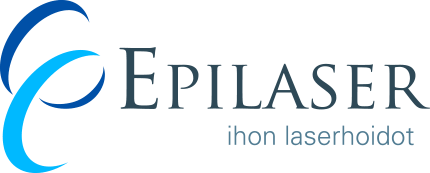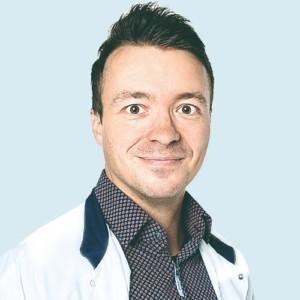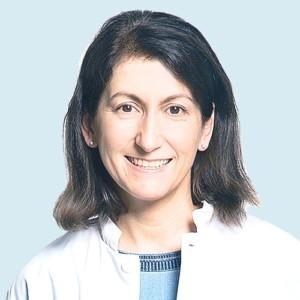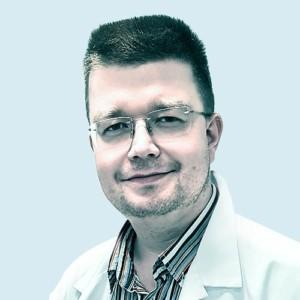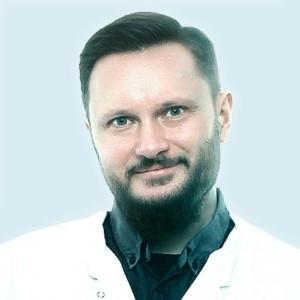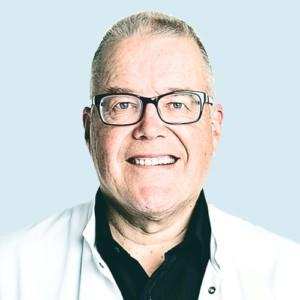What causes age-related changes?
90% of age-related changes are caused by the sun’s UV radiation. UV radiation causes DNA damage to the skin, inflammation and skin cancer. In addition to this, UV radiation breaks down the collagen and elastin strands of the dermis, which are an important part of the skin structure. When speaking of age-related changes, in practice, this refers to light-damaged skin.
How is light damage visible?
Light damage of the dermis appear as wrinkles and thinning of the skin, which also results in superficial blood vessels coming visible. Light-damaged areas may also present coarse reddish patches, i.e. actinic keratosis, which is a pre-stage of skin cancer, as well as superficial pigment changes, i.e. lentigo senilis changes (so-called ‘old age spots).
How is light damage treated?
All age-related changes and light damage of the skin are treated with fractional CO2 or Er:Glass laser therapy and photodynamic therapy (PDT).
How does a fractional laser work?
A fractional laser is used on the skin to make thousands of thermal points, which reach the dermis of the skin and activate the production of new collagen and elastin. At the same time, the treatment peels the skin’s superficial layer in a point-like manner and renews the surface cells.
How does photodynamic therapy (PDT) work?
In photodynamic therapy (PDT), light fractional laser treatment is carried out on the skin. After this, a photosensitising cream (methyl aminolevulinate) is applied to the area. The photosensitiser seeks the damaged cells and the early stages of skin cancer and becomes a photosensitive porphyrin. Porphyrins are activated by spending time outdoors in natural sunlight for 2 hours, and this results in abnormal cells being destroyed. It is referred to as so-called daylight PDT. After the outdoor phase, the rest of the day is spent indoors.
When can treatment be carried out?
Fractional CO2 and Er:Glass laser treatments are usually carried out between September and May. Photodynamic therapy (daylight PDT) is carried out between May-September.
How many treatments are needed?
Fractional laser treatments are usually carried out in 3-5 treatment series with a treatment interval of 1-2 months. Visible results are often obtained already from the first treatment session. Photodynamic therapy (daylight PDT) is usually carried out 1-2 times in a summer.
Does fractional laser treatment hurt?
The pain is felt during treatment as a sting-like, momentary burning sensation. When treating age-related skin changes, we use anaesthetic cream and/or cold air to alleviate pain, in which case the pain sensation during treatment is significantly reduced. The skin may be slightly sensitive after treatment.
What kind of results are achieved?
Fractional laser treatment and daylight PDT renew the skin’s surface cells by fading the colour differences and coarseness caused by actinic keratosis and lentigos. The treatments activate the skin’s collagen and elastin production, which is made visible as the tightening of the skin and the evening of fine lines. The treatments also have a strong rejuvenation effect, i.e. The skin’s biological clock is turned backwards. As a result of the treatment, the skin becomes brighter, more elastic and smoother. The skin-peeling effects are visible approximately one week after treatment, and the tightening effects will be visible over the course of 3-6 months. Fractional laser treatment also reduces the risk of developing skin cancer.
What are the after-care instructions?
The skin will be red and slightly swollen immediately after treatment. However, the skin can be washed as normal. Redness and swelling usually intensify during the first 24 hours, and the skin may also exude tissue fluid. At this stage, Bepanthen cream, which is available at pharmacies without a prescription, or saline compresses can be applied to the skin to calm it down. The swelling will soon go down, and the skin will begin to flake. At the same time, the skin colour will begin to normalise. All in all, recovery takes 5-7 days. During this time, saunas and swimming should be avoided. After treatment, the skin is protected with SPF50+ sunscreen lotion for 1-2 months. During sunny seasons, spending time in the sun should be avoided.
How do I access treatment?
An appointment is booked with a dermatologist to plan the treatment. Treatment is planned according to the skin type, skin changes and the season. The treatment of areas that are exposed to the sun is preferably scheduled between September and April. Do not wear makeup when arriving for the actual treatment. The physician will apply an anaesthetics cream on the skin for an hour before fractional laser treatment. Daylight PDT does not require local anaesthetics.
Book an appointment now!
Mikkeli →Vantaa →
Hämeenlinna →
Jyväskylä →
Kokkola →
Kouvola →
Kotka →
Kuopio →
Lahti →
Lappeenranta →
Oulu →
Pori →
Seinäjoki →
Tampere →
Vaasa →
